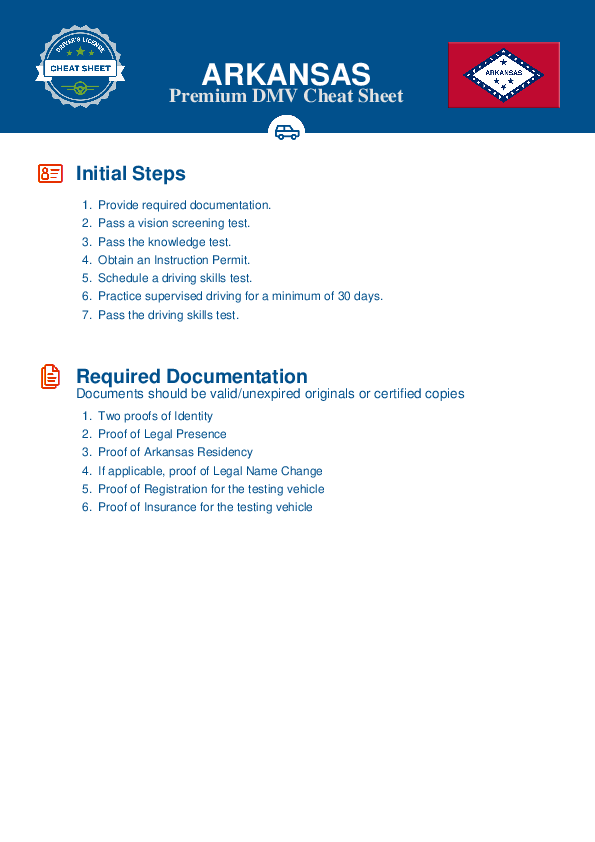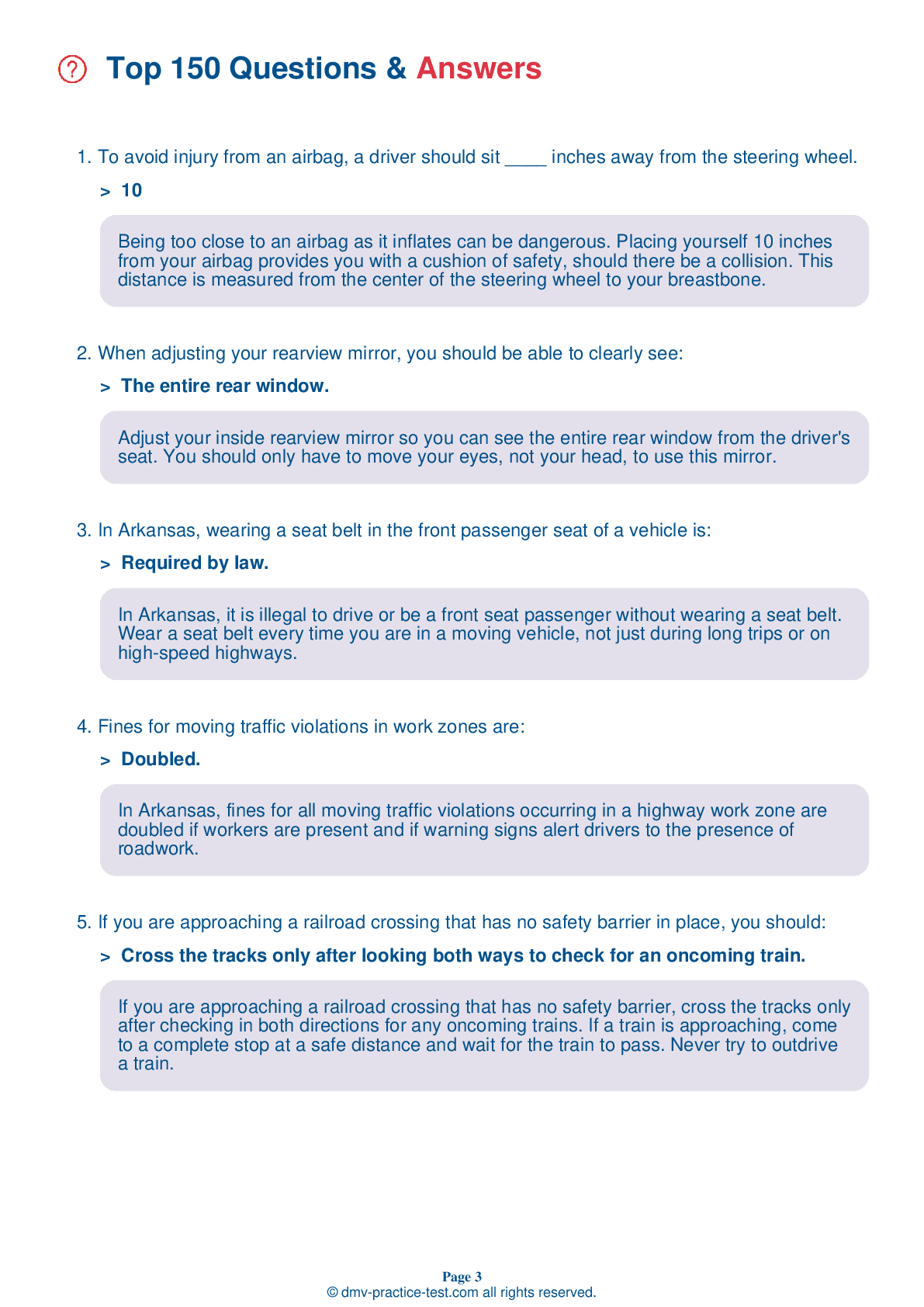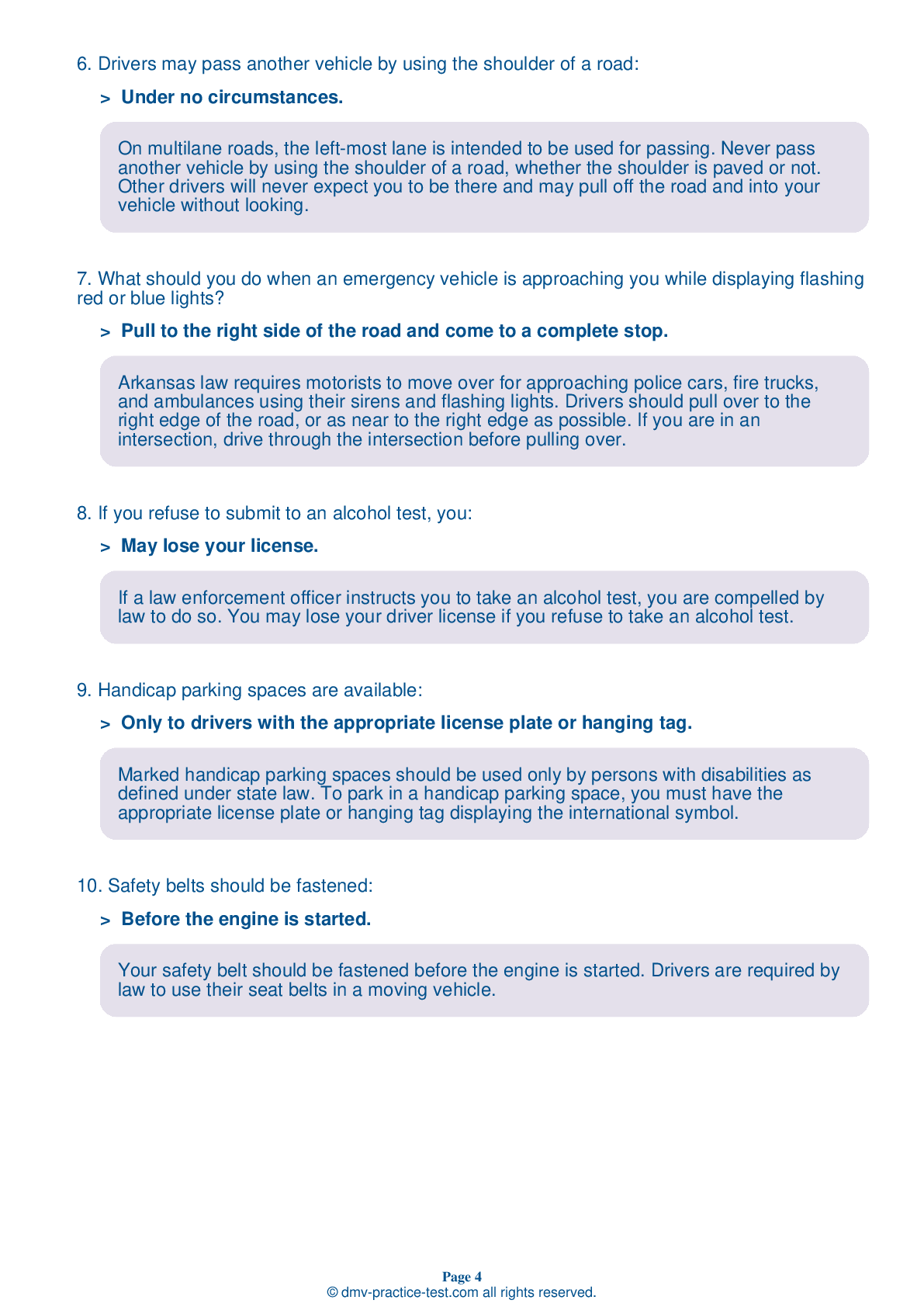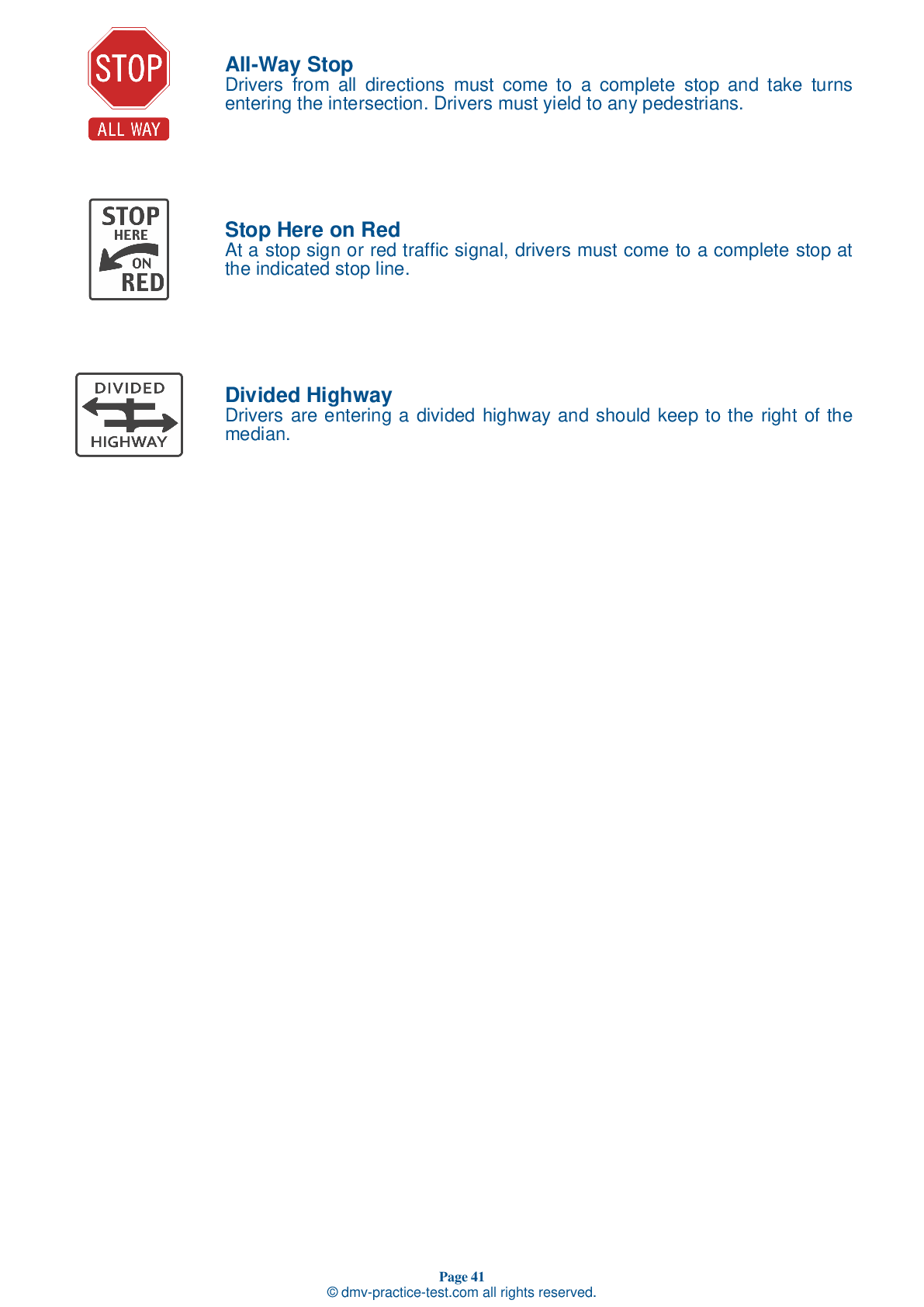FREE Arkansas DMV Practice Test #12
This Arkansas DMV practise tests was recently updated for January 2025. It includes questions based on the 2025 Arkansas Driver Handbook's most essential traffic signs and restrictions. Use actual questions that are very similar (often identical!) to the DMV driving permit test and driver's licence exam to study for the DMV driving permit test and driver's licence exam.
To help you remember the concepts, each practise test question includes a recommendation and explanation. The written component of the official DMV test will include questions about road rules, traffic signs, and driving statutes, as well as information from the Driver Handbook.
To receive the required passing grade, you must correctly answer 20 out of 25 questions. Take our DMV practise exam to help you prepare for your Arkansas instruction permit or driver's licence.
The DMV exam is available in multiple languages.
Using any form of testing aid will result in an automatic fail, and the DMV may take further action against your driver's licence, so don't do it.
1 . If the driver of an oncoming vehicle fails to dim their headlights:
If an oncoming driver fails to dim their headlights, look toward the right side of the road. This will keep you from being blinded by the other vehicle’s headlights and allow you to see enough of the road to stay on course. Do not try to retaliate by keeping your bright lights on.
2 . A dashed white line down the center of a two-lane road indicates that:
When a line separating lanes of traffic is dashed, drivers may cross the line to pass or change lanes. White lines separate lanes of traffic moving in the same direction.
3 . While driving at night, a vehicle coming toward you has its high beams on, making it hard for you to see the road ahead. You should:
If an oncoming driver fails to dim their high beams, you should avoid looking directly at the headlights. Instead, look toward the right edge of your lane and watch the oncoming vehicle out of the corner of your eye.
4 . To prevent yourself from becoming an aggressive driver:
To prevent yourself from becoming an aggressive driver, concentrate on driving and don't take the actions of other drivers personally. Be realistic about your travel time, drive within posted speed limits, and be forgiving of other drivers using the roadway.
5 . Water on the road can cause a vehicle to hydroplane. Your car may hydroplane at speeds as low as:
Hydroplaning occurs when there is standing water on a roadway. At speeds up to 35 mph, most tires will channel water away from the tire. As your speed increases past 35 mph, tires cannot channel the water as well and your tires may start to lose contact with the road and ride over the water like a set of water skis.
6 . When changing lanes, you should never:
When changing lanes, you must be sure that there are no vehicles in the space you want to enter. Check for other vehicles behind and to the side of your vehicle by checking your mirrors and blind spots. Always use the proper turn signal before changing lanes to allow surrounding vehicles time to react to your movements.
7 . If you see orange construction signs and cones on a freeway, you must:
As you enter a work zone, signs and message boards will warn you of workers, slow-moving equipment, and/or closed lanes ahead. You should reduce your speed and be prepared to slow down or stop.
8 . If a tire suddenly blows out while you are driving, you should:
If you experience a sudden tire blowout, do not panic. Grasp the steering wheel firmly and take your foot off the accelerator to allow the vehicle to roll to a stop. Lightly apply the breaks when it is safe to do so. Do not move to the shoulder of the road until the car has slowed considerably.
Need Car Insurance? No problem!
Compare the best rates in Arkansas and find a personalized policy that meets your needs.
1. Are You Currently insured ?
2. Married ?
3. Do you own your Home?
4. Do you have more than 1 car ?
5. Have you or a Family Member Honorably Served in U.S. Military ?
6. Your Name
7. Age
8. Zip code
IMPORTANT REMINDER:Auto Insurance is Mandatory to drive in Arkansas. Get covered before you hit the road to avoid any fines.
Ranked by best match



